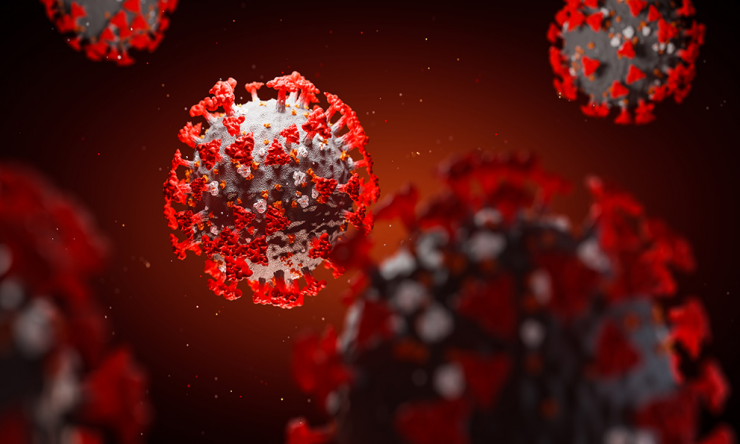Electrical stimulation revitalizes muscle perfusion caused by long COVID
A new study led by researchers at Baylor College of Medicine found that the use of a take-home electrical stimulation device improved muscle perfusion, the rate at which oxygen is delivered to muscles, and endurance in patients who were hospitalized due to COVID-19 infection and experienced persistent atrophy, weakness, pain or fatigue in the lower extremities. The paper was published in Physiological Reports.
“Currently, there is no proven reason as to why Sars-CoV-2 causes damage to the muscles,” said Dr. Alejandro Zulbaran-Rojas, lead author on the paper and researcher in the Michael E. DeBakey Department of Surgery. “There is existing evidence that shows electrical stimulation can improve muscle perfusion and oxygen delivery similar to light exercise. Also, this therapy has demonstrated to improve muscle endurance in patients with previous hospitalization, so we designed our study based off these facts.”
“Our study offers hope for addressing lingering COVID-19 residual symptoms like pain and fatigue in the lower extremity, known as Post-Acute Sequelae of SARS-CoV-2 (PASC),” said Dr. Bijan Najafi, corresponding author on the paper and professor of surgery at Baylor. “We discovered that a specific type of electrical stimulation, which improves oxygenation without tiring the muscles, could support exercise intolerance present in long COVID patients. This safe, patient-friendly method uses adhesive pads on the skin and can be performed at home without regular clinic visits.”
Eighteen individuals, aged 18–85 years old, who were diagnosed with long COVID and reported atrophy, weakness, pain or fatigue in both lower extremities participated in the study, with half in the control group and the others in the intervention group. Participants used a small electrical stimulation device connected to electrode pads on both of their gastrocnemius muscles, the bulkier muscle on the calf, daily for one hour over four weeks. Half received active electrical stimulation and the other half placebo. Participants then returned to the clinic weekly for assessments.
“We used near-infrared spectroscopy to photograph how much oxygenated hemoglobin was able to flow through the calves and down to the foot, and we used surface electromyography to measure the electrical activity of the muscle fibers in the calves, both outcomes were assessed in response to one-hour electrical stimulation,” said Zulbaran. “These methods kept our data collection as non-invasive as possible, while still allowing us to see the impact of the electrical stimulation.”
After four weeks, participants who received active electrical stimulation showed signs of increased levels of oxygenated hemoglobin to the foot as well as improved muscle endurance after undergoing one-hour electrical stimulation in the endpoint assessment.
“We found that daily one-hour sessions of electrical stimulation were both safe and well-tolerated,” said Zulbaran. “Patients were given surveys before and after the study and those who received active electric stimulation reported increases in the Patient-Reported Outcomes Measurement Information System (PROMIS) scale, which evaluates physical, mental, and social health, after four weeks.”
Based on the data gathered from this study, Zulbaran and his team believe that this therapy is a practical and promising intervention for individuals with musculoskeletal symptoms caused by long COVID who are seeking to improve their functional recovery. Zulbaran plans to create a follow-up study to examine quantifiable impacts of electrical stimulation and the long-term effects of this intervention on this population.
“Our study, though a starting point, may contribute to developing practical solutions that alleviate musculoskeletal symptoms in long COVID and similar sequeale caused by respiratory infections,” Najafi said.
Other contributors to this work include Myeounggon Lee, Rasha O. Bara, Areli Flores-Camargo, M. G. Finco, Amir Behzad Bagheri, Dipaben Modi and Fidaa Shaib affiliated with Baylor and Gil Spitz affiliated with Baylor St Luke's Medical Center.
This study was supported in part Aby Avazzia Inc. (DL, TX, US), which is the manufacturer of the Tennant Biomodulator®. The sponsor did not have any decision or contribution to the review, approval, and submission of this article.










